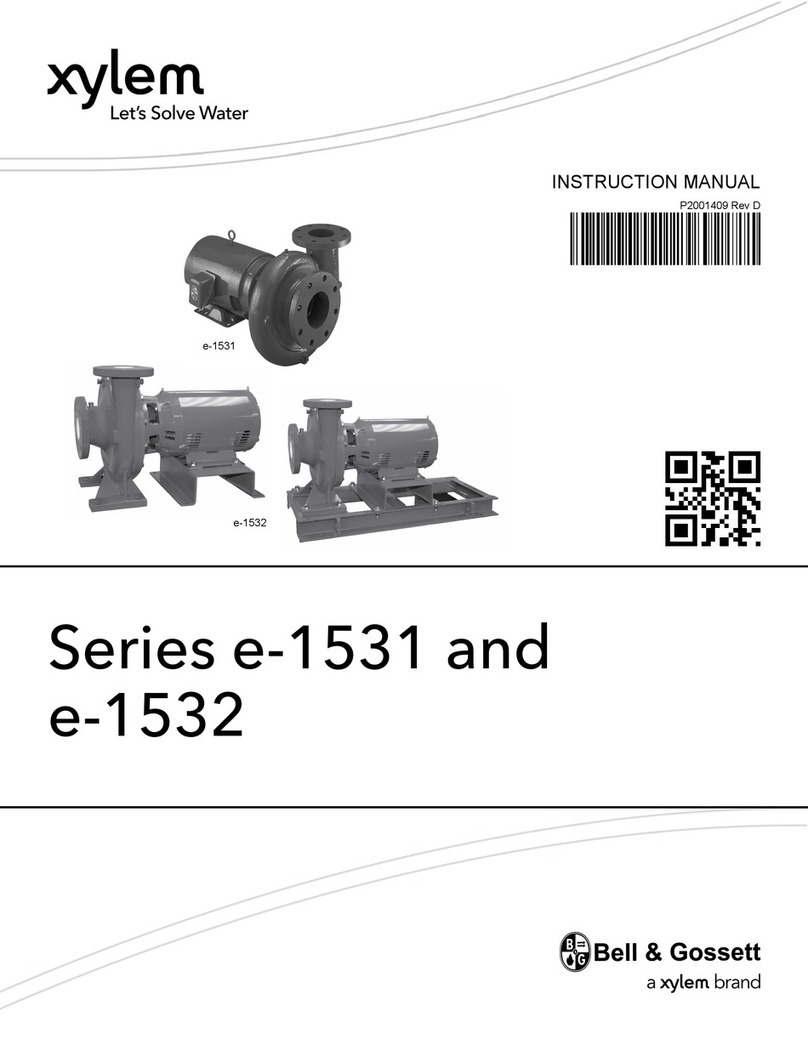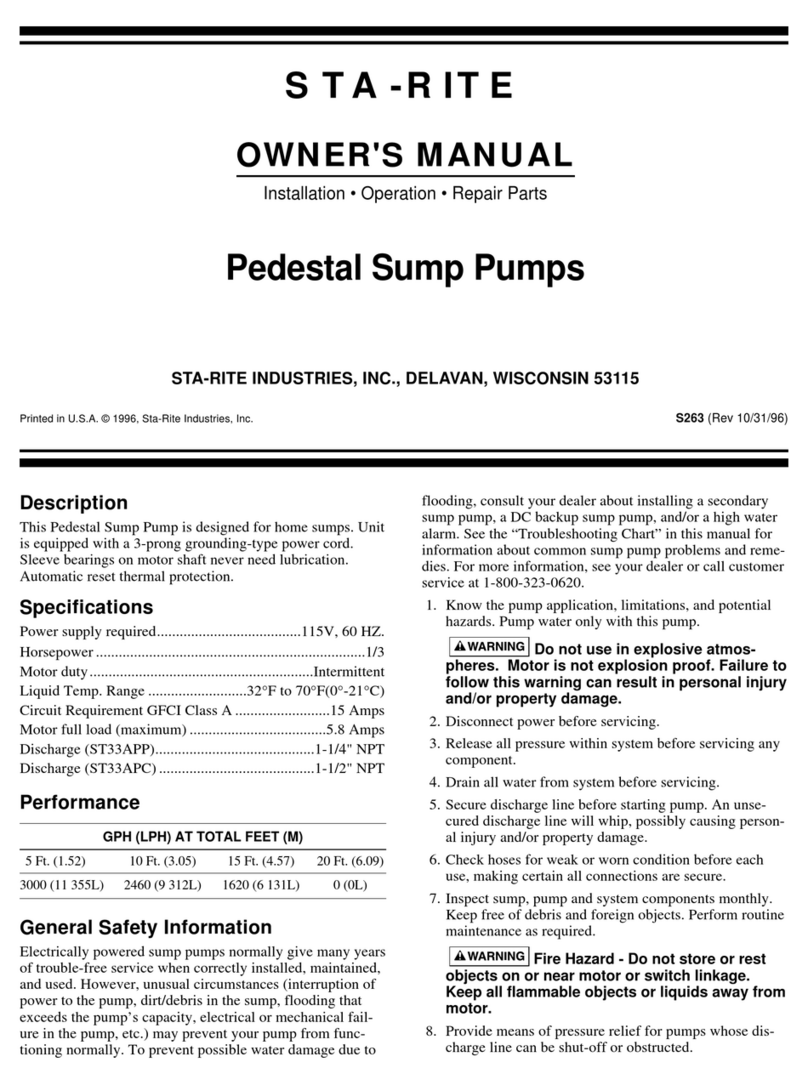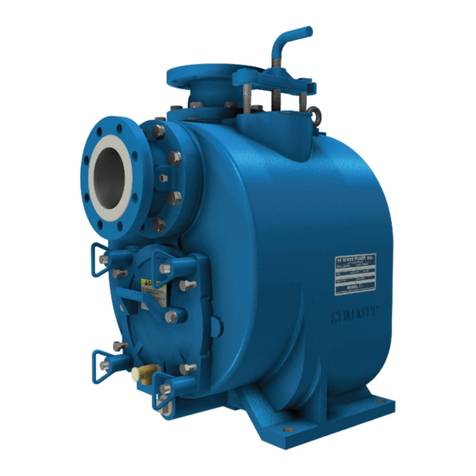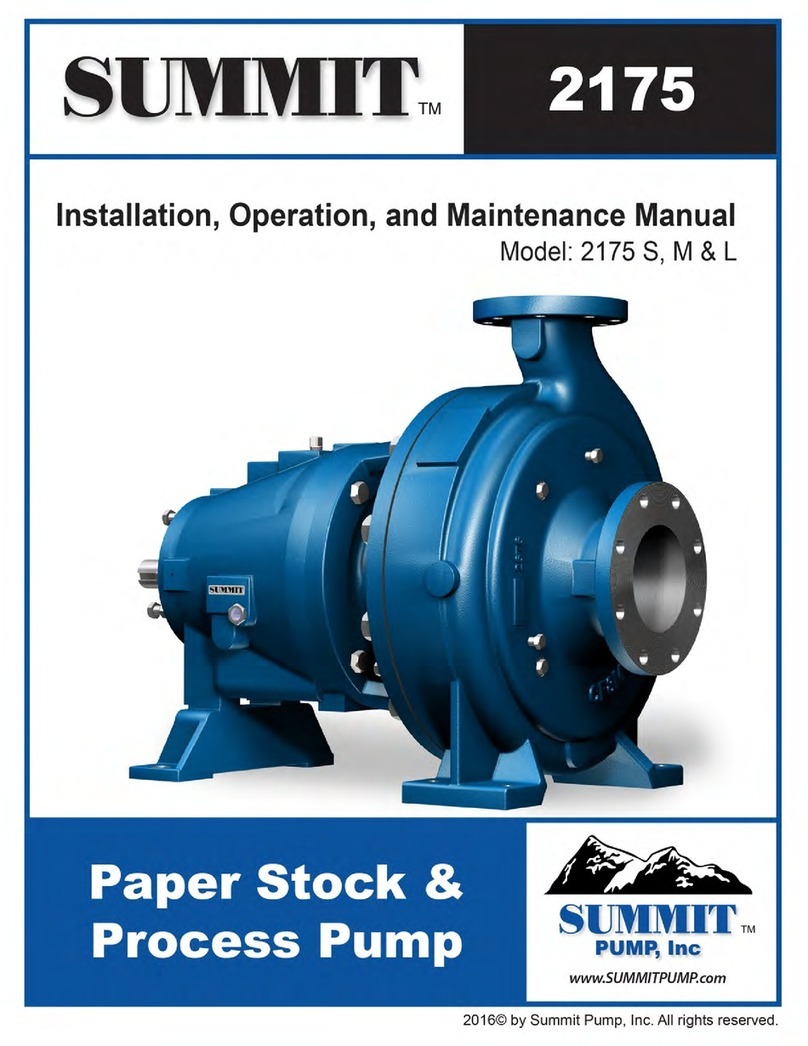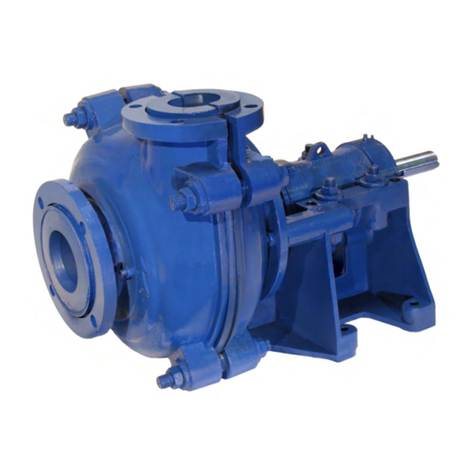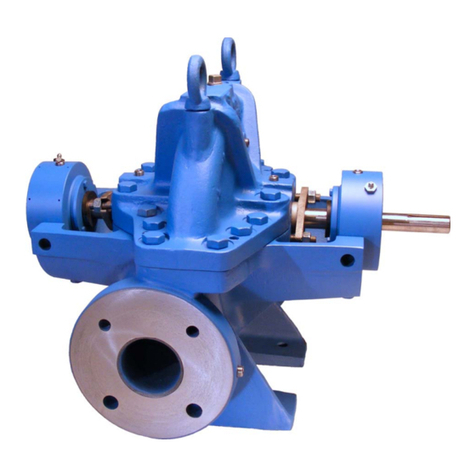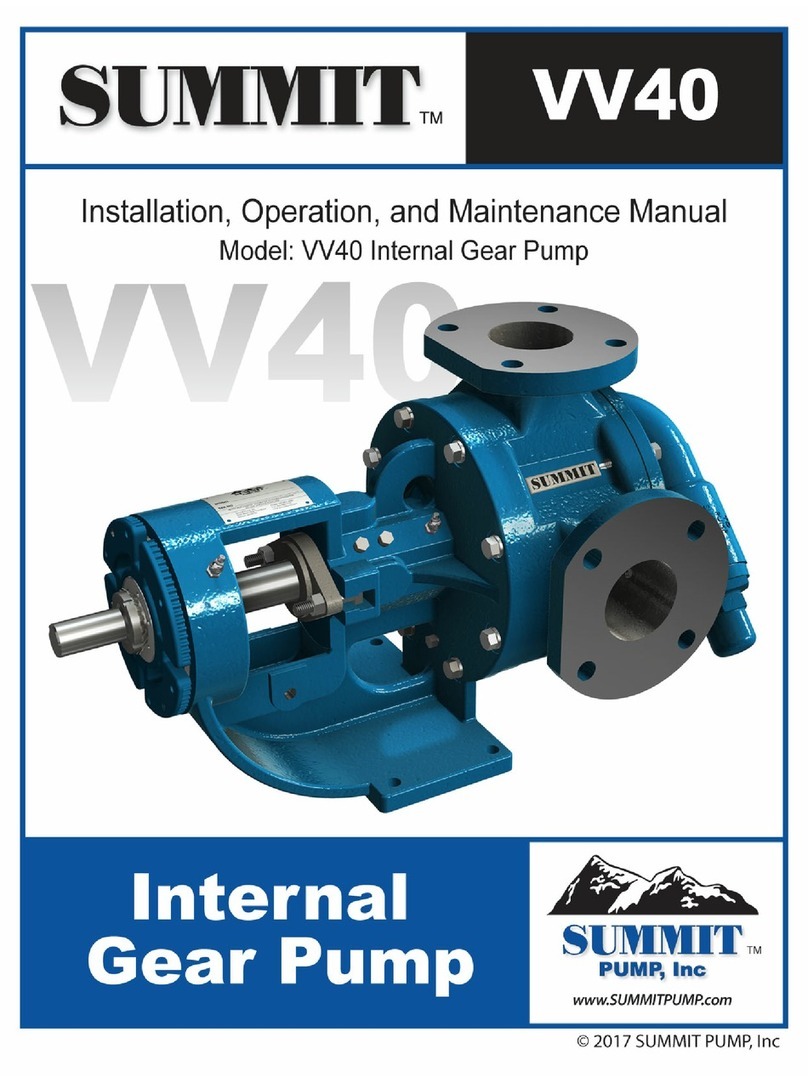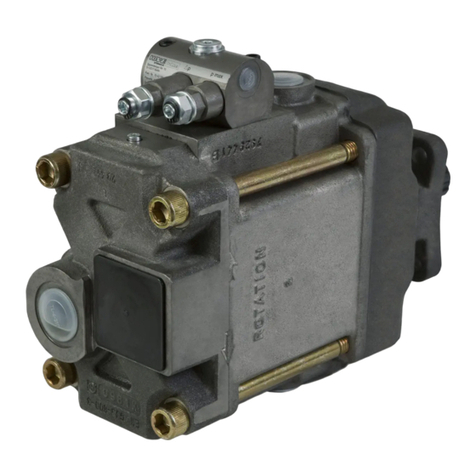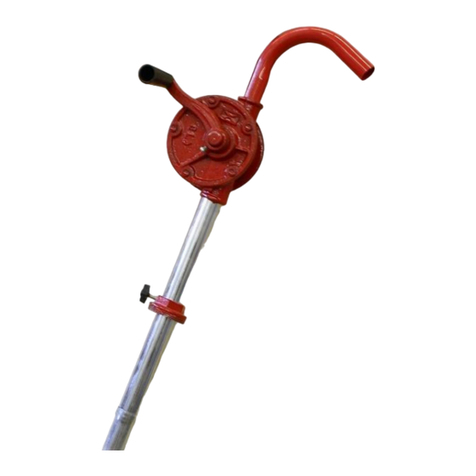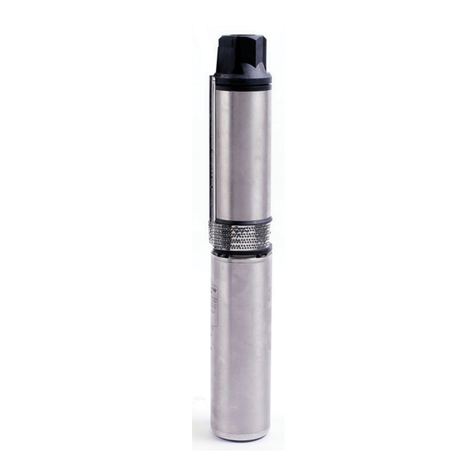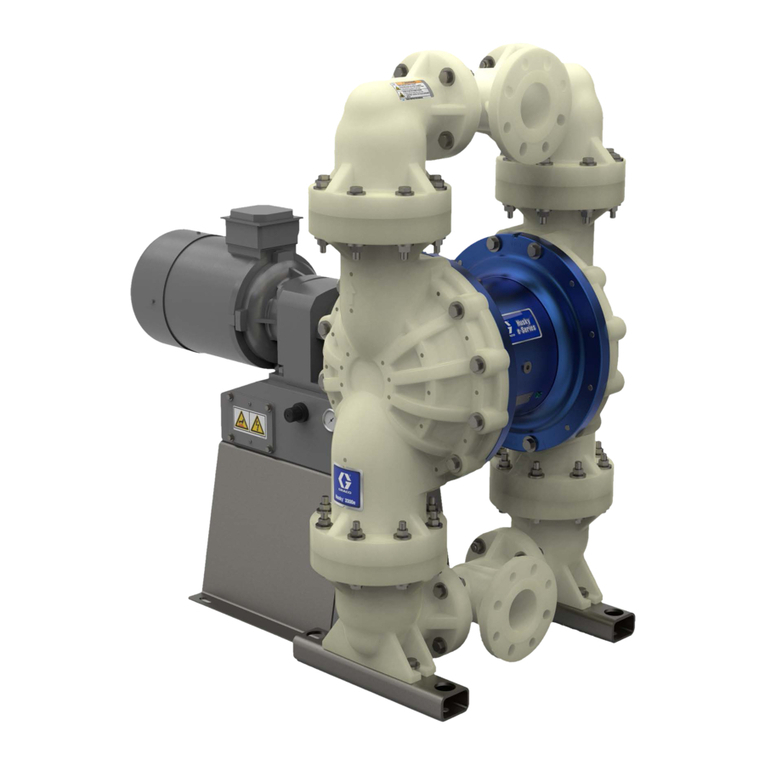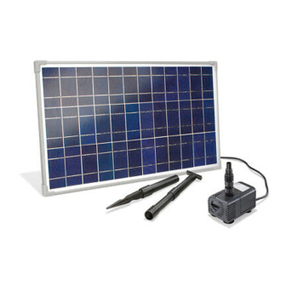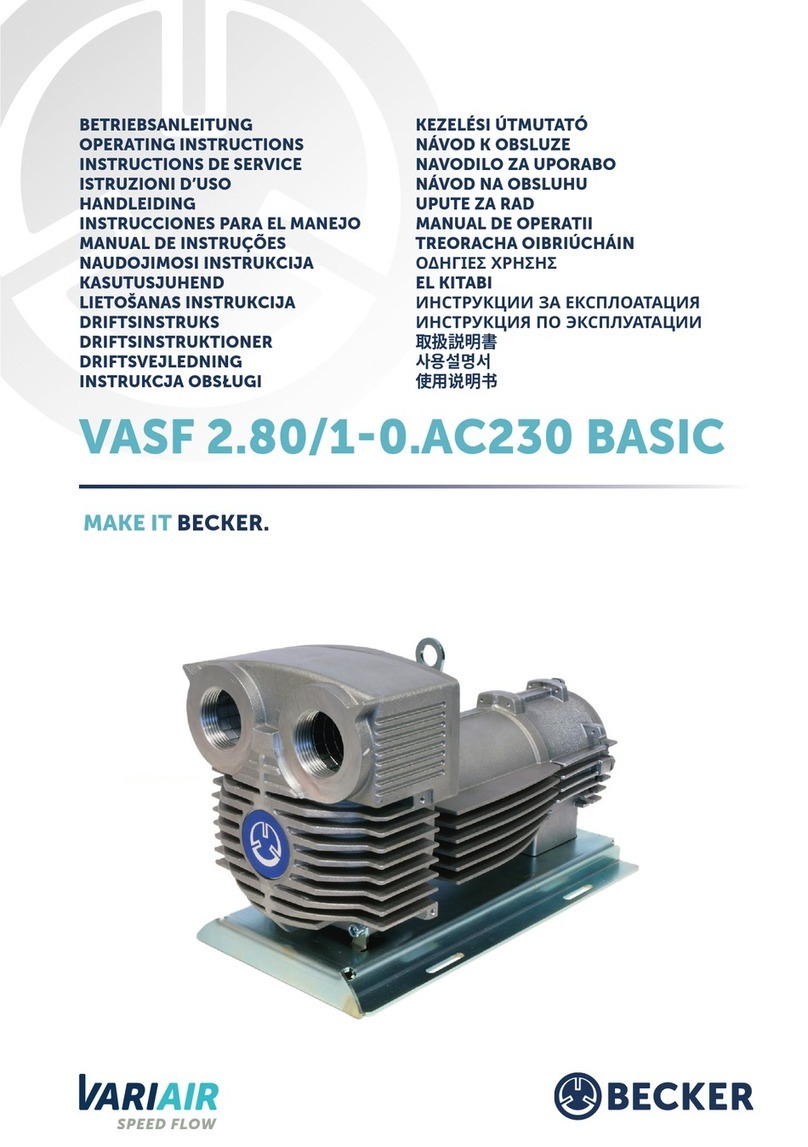
Installation, Operation, and Maintenance Manual
SUMMIT PUMP MODEL CCFM GENERAL PURPOSE i
1 CONTENTS
1CONTENTS..............................I
2INTRODUCTION ..................... 2
3SAFETY .................................. 3
3.1 PUMP SAFETY WARNINGS ....................... 3
4NOMENCLATURE................... 5
4.1 NAMEPLATE INFORMATION ............................ 5
4.2 MODEL NO. ................................................ 5
4.3 MATL......................................................... 5
4.4 SERIAL NO. ................................................. 5
4.5 PEICL &PEIVL.............................................. 5
4.6 IMP.DIA.&MAX IMP.DIA............................ 6
4.7 MAX PSI @100°F ...................................... 6
4.8 NOM.RPM ................................................ 6
5RECEIPT AND STORAGE ......... 7
5.1 RECEIVING THE PUMP.............................. 7
5.2 STORING THE PUMP ................................ 7
5.2.1 Temporary ........................................ 7
5.2.2 Long Term......................................... 7
5.3 HANDLING ............................................... 7
5.4 LIFTING .................................................... 7
6INSTALLATION....................... 8
6.1 GENERAL.................................................. 8
6.2 LOCATION ................................................ 8
6.3 BASE PLATE .............................................. 8
6.4 FOUNDATION .......................................... 8
6.4.1 Concrete Sub-Base ........................... 8
6.5 BASE PLATE GROUTING............................ 9
6.6 ROTATION AND ORIENTATION .............. 10
6.6.1 Rotation.......................................... 10
6.6.2 Orientation ..................................... 10
6.7 PIPING CONNECTION –SUCTION /
DISCHARGE ............................................ 11
6.7.1 Suction Piping................................. 11
6.7.2 Discharge Piping ............................. 11
7OPERATION ......................... 12
7.1 CHECKING ROTATION ............................ 12
7.2 FIRST RUN CHECK................................... 12
7.2.1 Start Up .......................................... 13
7.2.2 Shut Down...................................... 13
7.3 LUBRICATION............................................. 13
7.3.1 Grease ............................................ 14
7.3.2 Lubrication Frequency.................... 14
7.3.3 Lubrication Amount ....................... 14
8MAINTENANCE TIMETABLE. 15
8.1 DAILY MAINTENANCE ............................ 15
8.2 SIX MONTH MAINTENANCE................... 15
8.3 YEARLY MAINTENANCE ......................... 15
9TROUBLESHOOTING............ 16
9.1 PUMP PROBLEMS .................................. 16
9.2 PROBABLE CAUSE AND REMEDY............ 16
10 EXPLODED VIEWS ............... 17
10.1 FM1 &FM2 CAST IRON/BRONZE,FM2
STAINLESS................................................. 17
10.2 FM1 STAINLESS......................................... 18
10.3 CC1 &CC2 CAST IRON/BRONZE,CC2 STAINLESS
....................................................... 19
10.4 CC1 STAINLESS.......................................... 20
11 DISASSEMBLY MODEL CCFM 21
11.1 LIQUID END............................................ 22
11.2 ADAPTOR KIT ......................................... 22
11.3 POWER END........................................... 23
12 ASSEMBLY MODEL CCFM .... 25
12.1 POWER END........................................... 27
12.2 ADAPTOR KIT ......................................... 28
12.3 LIQUID END............................................... 29
13 CASING RING WEAR............ 30
15 APPENDIX E – REFERENCE
TABLES................................ 32
15.1 TORQUE GUIDELINES............................. 32
15.1.1 Bolt Torques ................................... 32
16 ZAPPENDIX F – PUMP
DIMENSIONS....................... 34
17 PUMP INFORMATION ......... 36



